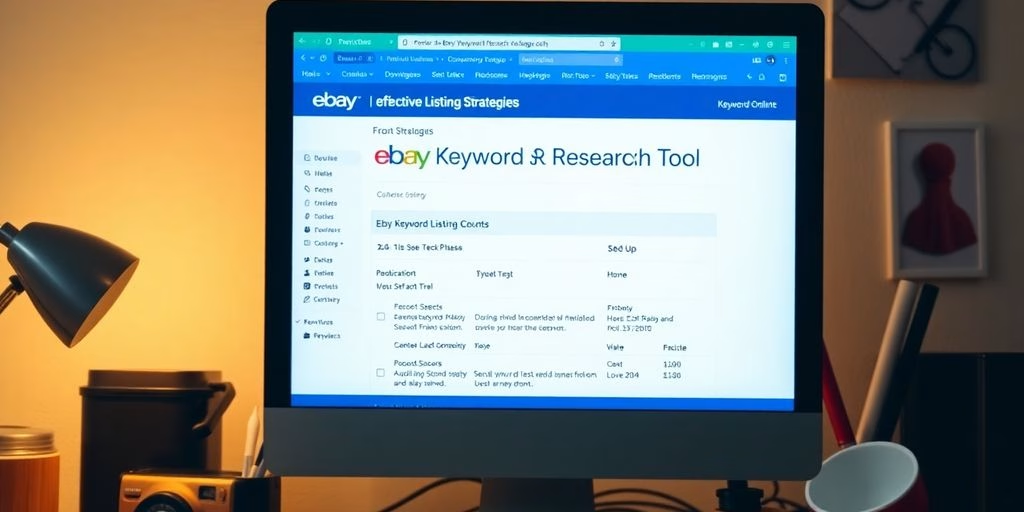Dalam dunia pemasaran yang serba cepat, menetapkan tujuan yang jelas dan dapat dicapai adalah kunci kesuksesan. Sasaran SMART, yang merupakan singkatan dari Specific, Measurable, Attainable, Relevant, and Time-bound, menawarkan cara terstruktur untuk merencanakan dan mencapai tujuan pemasaran Anda. Panduan ini akan memandu Anda melalui setiap langkah dalam membuat sasaran SMART, membantu Anda meningkatkan upaya pemasaran dan mencapai target bisnis Anda.
Daftar Isi
BeralihHal-hal Penting yang Dapat Dipetik
- Menentukan tujuan pemasaran yang spesifik membantu dalam menciptakan sasaran yang jelas dan terfokus.
- Kriteria yang terukur memungkinkan Anda untuk melacak kemajuan dan menentukan keberhasilan.
- Menetapkan tujuan yang dapat dicapai memastikan bahwa target Anda realistis dan dapat dicapai.
- Menyelaraskan tujuan pemasaran dengan tujuan bisnis membuat upaya Anda tetap relevan dan strategis.
- Sasaran yang terikat waktu memberikan tenggat waktu yang membantu menjaga momentum dan mencapai hasil yang tepat waktu.
Seni Menentukan Tujuan Pemasaran yang Spesifik

Menetapkan tujuan yang jelas dan tepat adalah kunci keberhasilan kampanye pemasaran. Tujuan pemasaran yang spesifik bukan hanya tentang meningkatkan penjualan atau memperluas pangsa pasar; tujuan ini melibatkan penetapan target yang terperinci dan terukur yang sesuai dengan kebutuhan dan kemampuan bisnis yang unik. Kekhususan ini memastikan setiap tindakan yang diambil selaras dengan tujuan yang jelas, sehingga lebih mudah untuk melacak kemajuan dan kesuksesan. Ini seperti membuat peta jalan di mana setiap belokan sudah direncanakan.
Membuat Tujuan yang Jelas dan Tepat
Menciptakan tujuan pemasaran yang spesifik dimulai dengan memahami posisi pasar, target audiens, dan persaingan bisnis Anda saat ini. Dengan menggunakan pengetahuan ini, perusahaan dapat menetapkan tujuan yang ambisius namun dapat dicapai. Berikut ini beberapa langkah untuk membantu Anda menyusun tujuan yang jelas:
- Identifikasi tujuan utama Anda.
- Jabarkan tujuan-tujuan ini ke dalam langkah-langkah yang lebih kecil dan dapat ditindaklanjuti.
- Pastikan setiap langkah terperinci dan terukur.
- Selaraskan langkah-langkah ini dengan strategi bisnis Anda secara keseluruhan.
Contoh Sasaran Pemasaran Spesifik
Untuk memberi Anda gambaran yang lebih baik, berikut adalah beberapa contoh sasaran pemasaran yang spesifik:
- Meningkatkan lalu lintas situs web sebesar 20% selama tiga bulan ke depan.
- Tingkatkan keterlibatan media sosial sebesar 15% dalam waktu enam bulan.
- Hasilkan 50 prospek baru per bulan melalui pemasaran konten.
Menghindari Ketidakjelasan dalam Penetapan Tujuan
Menghindari ketidakjelasan sangat penting dalam penetapan tujuan. Tujuan yang tidak jelas dapat menyebabkan kebingungan dan kurangnya arah. Sebaliknya, pastikan tujuan Anda jelas dan spesifik. Misalnya, alih-alih mengatakan "meningkatkan kehadiran di media sosial," katakan "meningkatkan pengikut Instagram sebanyak 10% di kuartal berikutnya." Dengan cara ini, Anda memiliki target yang jelas untuk dicapai.
Menetapkan tujuan yang jelas dan tepat adalah kunci keberhasilan kampanye pemasaran.
Cetak miring: Tujuan pemasaran yang spesifik bukan hanya tentang meningkatkan penjualan atau memperluas pangsa pasar; tujuan ini melibatkan penetapan target yang terperinci dan terukur yang sesuai dengan kebutuhan dan kemampuan bisnis yang unik.
Sorotan 1: membuat peta jalan di mana
Sorotan 2: tetapkan tujuan yang cerdas
Sorotan 3: selaraskan dengan tujuan bisnis
Mengukur Keberhasilan: Menetapkan Kriteria yang Dapat Diukur

Metrik Utama untuk Dilacak
Untuk mengetahui apakah tujuan pemasaran Anda sudah sesuai dengan rencana, Anda perlu mengawasi metrik utama. Metrik ini bertindak seperti papan skor untuk permainan pemasaran Anda. Berikut adalah beberapa yang penting untuk dipertimbangkan:
- Lalu Lintas Situs Web: Berapa banyak orang yang mengunjungi situs Anda?
- Tingkat Konversi: Berapa banyak pengunjung yang berubah menjadi pelanggan?
- Keterlibatan Media Sosial: Apakah orang-orang menyukai, membagikan, dan mengomentari postingan Anda?
- Tingkat Keterbukaan Email: Apakah email Anda dibuka dan dibaca?
- Pendapatan yang Dihasilkan: Apakah upaya pemasaran Anda menghasilkan uang?
Dengan melacak metrik ini, Anda bisa melihat apa yang berhasil dan apa yang perlu diubah.
Alat untuk Mengukur Sasaran Pemasaran
Memiliki alat yang tepat dapat membuat pengukuran tujuan pemasaran Anda menjadi mudah. Berikut adalah beberapa yang populer:
- Google Analytics: Sangat bagus untuk melacak lalu lintas situs web dan perilaku pengguna.
- HubSpot: Alat yang komprehensif untuk mengelola dan mengukur kampanye pemasaran.
- Hootsuite: Sempurna untuk memantau keterlibatan media sosial.
- Mailchimp: Sangat baik untuk melacak tingkat keterbukaan email dan kinerja kampanye.
Alat-alat ini membantu Anda mengumpulkan data dan memahaminya, sehingga Anda dapat mengambil keputusan yang tepat.
Menafsirkan Data Secara Efektif
Mengumpulkan data hanyalah langkah pertama. Anda juga harus tahu cara membacanya. Berikut ini beberapa tipsnya:
- Carilah tren dari waktu ke waktu, bukan hanya lonjakan yang terjadi sekali saja.
- Bandingkan data Anda dengan tujuan Anda untuk melihat apakah Anda berada di jalur yang benar.
- Gunakan alat bantu visual seperti bagan dan grafik untuk membuat data lebih mudah dipahami.
Terukur: Sertakan kriteria keberhasilan yang spesifik sehingga Anda dapat mengukur kemajuan dan kesuksesan. Ini adalah cara terbaik untuk melacak pencapaian Anda dan tetap termotivasi.
Dengan menginterpretasikan data Anda secara efektif, Anda dapat membuat keputusan yang lebih cerdas dan menjaga upaya pemasaran Anda tetap berada di jalur yang benar.
Menyeimbangkan Ambisi dan Realisme: Menetapkan Tujuan yang Dapat Dicapai
Menilai Sumber Daya Anda
Sebelum Anda menetapkan tujuan apa pun, perhatikan baik-baik apa yang Anda miliki. Apakah Anda memiliki alat, anggaran, dan tim yang tepat untuk mencapai tujuan Anda? Ambisi sering kali mendorong kita untuk menetapkan tujuan yang ambisiusyang sangat mengagumkan. Akan tetapi, sangat penting untuk menyeimbangkan ambisi dengan realisme. Pastikan tujuan Anda sesuai dengan sumber daya Anda.
Menetapkan Tolok Ukur yang Realistis
Saat Anda menetapkan tujuan, pastikan tujuan tersebut realistis. Alih-alih menargetkan untuk menggandakan lalu lintas situs web Anda dalam semalam, bidiklah peningkatan yang lebih kecil dan lebih mudah dicapai. Dengan cara ini, Anda bisa membuat tim Anda tetap termotivasi dan menghindari frustrasi. Berikut ini beberapa tipsnya:
- Memecah tujuan besar menjadi langkah-langkah yang lebih kecil
- Tetapkan tenggat waktu untuk setiap langkah
- Rayakan kemenangan-kemenangan kecil di sepanjang jalan
Menghindari Target yang Terlalu Ambisius
Sangat mudah untuk terbawa suasana dan menetapkan tujuan yang terlalu tinggi. Namun, menetapkan tujuan yang tidak dapat dicapai dapat menyebabkan frustrasi dan demotivasi. Untuk menghindari hal ini, pertimbangkan sumber daya yang tersedia, kondisi pasar, dan kinerja sebelumnya. Tetapkan tujuan yang tinggi, namun tetaplah berada dalam wilayah kemungkinan.
Menyeimbangkan ambisi dengan realisme adalah kunci untuk mempertahankan motivasi dan memastikan kemajuan menuju tujuan Anda.
Dengan mengikuti langkah-langkah ini, Anda dapat menetapkan tujuan yang menantang dan dapat dicapai, yang mengarah pada kesuksesan jangka panjang.
Menyelaraskan Sasaran dengan Tujuan Bisnis

Menyelaraskan tujuan pemasaran Anda dengan tujuan bisnis Anda seperti menguasai strategi konten media sosial Anda: kiat dan teknik untuk sukses. Menetapkan tujuan yang jelas dan selaras dengan tujuan bisnis, mengukur keberhasilan dengan metrik utama, dan menyesuaikan tujuan berdasarkan kinerja. Hal ini memastikan bahwa upaya pemasaran Anda tidak hanya sekadar pekerjaan yang sibuk tetapi juga mendorong hasil bisnis yang nyata.
Memastikan Relevansi dalam Tujuan Pemasaran
Untuk memastikan tujuan Anda berkontribusi pada kesuksesan bisnis Anda, tujuan tersebut harus relevan. Selaraskan tujuan Anda dengan tujuan bisnis dan strategi pemasaran yang lebih luas. Pikirkan tentang bagaimana pencapaian sasaran Anda akan berdampak pada pertumbuhan, profitabilitas, kesadaran merek, atau kepuasan pelanggan. Dengan menetapkan tujuan yang relevan, Anda dapat memastikan bahwa upaya Anda terfokus untuk mendorong hasil yang sesuai dengan prioritas bisnis Anda.
Menghubungkan Tujuan Pemasaran dengan Strategi Bisnis
Selaraskan tujuan Anda dengan tujuan yang lebih luas dari bisnis Anda. Pertimbangkan bagaimana pencapaian tujuan Anda akan berkontribusi pada pertumbuhan, profitabilitas, kepuasan pelanggan, atau reputasi merek bisnis Anda. Dengan menyelaraskan tujuan Anda dengan relevansi bisnis, Anda dapat memastikan bahwa upaya Anda terfokus untuk mendorong hasil yang secara langsung berdampak pada kesuksesan bisnis Anda.
Contoh Sasaran Pemasaran yang Selaras
Berikut adalah beberapa contoh tujuan pemasaran yang selaras dengan tujuan bisnis:
- Tingkatkan lalu lintas situs web sebesar 20% untuk meningkatkan penjualan online.
- Meningkatkan skor kepuasan pelanggan sebesar 15% untuk meningkatkan loyalitas merek.
- Hasilkan 30% lebih banyak prospek melalui kampanye email yang ditargetkan untuk mendorong pertumbuhan pendapatan.
Dengan menetapkan tujuan seperti ini, Anda dapat memastikan bahwa upaya pemasaran Anda secara langsung berkontribusi pada kesuksesan bisnis Anda secara keseluruhan.
Pentingnya Sasaran yang Terikat Waktu
Menetapkan tenggat waktu untuk tujuan pemasaran Anda sangatlah penting. Sebuah gol tanpa tenggat waktu tidak akan banyak membantu. Bagaimana Anda bisa mengidentifikasi keberhasilan atau kegagalan? Inilah alasannya Sasaran S.M.A.R.T. menetapkan tanggal akhir. Ini tidak berarti bahwa semua pekerjaan telah selesai, tetapi ini berarti Anda dapat mengevaluasi keberhasilan usaha dan menetapkan tujuan baru.
Jebakan Umum dalam Menetapkan Tujuan SMART

Menetapkan sasaran SMART adalah cara yang bagus untuk mencapai tujuan pemasaran Anda, tetapi ada beberapa jebakan umum yang harus Anda waspadai. Menghindari kesalahan-kesalahan ini dapat membantu Anda tetap berada di jalur yang benar dan mencapai tujuan Anda dengan lebih efektif.
Mengidentifikasi Kesalahan Umum
- Kurangnya Kejelasan: Jika tujuan Anda tidak jelas, perbaiki hingga menjadi spesifik. Ambiguitas dapat menyebabkan kebingungan dan kurangnya arah.
- Kesulitan dalam Pengukuran: Pastikan tujuan Anda memiliki elemen yang dapat diukur. Gunakan alat bantu atau metrik untuk melacak kemajuan.
- Tujuan yang tidak realistis: Kaji ulang sumber daya dan kendala Anda. Sesuaikan tujuan Anda agar dapat dicapai.
- Tujuan yang tidak relevan: Evaluasi kembali pentingnya tujuan Anda. Pastikan tujuan tersebut selaras dengan visi jangka panjang Anda.
Cara Menghindari Jebakan Penetapan Tujuan
- Jadilah jernih tentang apa yang ingin Anda capai. Tujuan yang tidak jelas akan menghasilkan hasil yang tidak jelas.
- Sertakan nomor. Bagaimana Anda akan tahu apakah Anda telah mencapai target jika Anda tidak dapat mengukurnya?
- Pastikan tujuan Anda realistis. Target yang terlalu ambisius dapat menyebabkan frustrasi dan kelelahan.
- Selaraskan tujuan Anda dengan strategi bisnis Anda untuk memastikan tujuan tersebut relevan.
Belajar dari Kegagalan di Masa Lalu
Merefleksikan kegagalan di masa lalu dapat memberikan wawasan yang berharga. Apa yang salah? Apa yang seharusnya bisa dilakukan secara berbeda? Gunakan pelajaran ini untuk menyempurnakan tujuan Anda di masa depan dan menghindari pengulangan kesalahan yang sama.
Terkadang, terlalu fokus pada tujuan SMART dapat membuat Anda mengabaikan tugas-tugas penting lainnya. Keseimbangan adalah kunci untuk mencapai kesuksesan secara keseluruhan.
Contoh Dunia Nyata dari Sasaran SMART dalam Pemasaran
Dalam hal menetapkan tujuan SMART dalam pemasaran, contoh dunia nyata bisa sangat membantu. Mereka tidak hanya memberikan gambaran yang jelas tentang seperti apa tujuan yang sukses, tetapi juga menawarkan inspirasi untuk strategi Anda sendiri. Sasaran SMART bersifat spesifik, terukur, dapat dicapai, relevan, dan terikat waktu. Mari kita bahas beberapa contoh praktis yang dapat Anda manfaatkan untuk kampanye pemasaran Anda.
Dalam dunia pemasaran, menetapkan tujuan yang SMART dapat membuat perbedaan besar. Bayangkan meningkatkan visibilitas merek Anda atau meningkatkan penjualan dengan target yang jelas dan dapat dicapai. Ingin tahu bagaimana cara melakukannya? Lihat situs web kami untuk contoh dunia nyata dan mulailah menetapkan tujuan SMART Anda sendiri hari ini!
Kesimpulan
Dalam skema besar pemasaran, menetapkan tujuan SMART seperti memiliki GPS untuk kampanye Anda. Hal ini membantu Anda tetap berada di jalur yang benar, mengukur kemajuan Anda, dan mencapai tujuan tanpa tersesat. Dengan membuat tujuan Anda Spesifik, Terukur, Dapat Dicapai, Relevan, dan Terikat Waktu, Anda dapat mengubah ambisi yang samar-samar menjadi rencana yang jelas dan dapat ditindaklanjuti. Jadi, apakah Anda ingin meningkatkan lalu lintas situs web, meningkatkan penjualan, atau meningkatkan kesadaran merek, tujuan SMART adalah peta jalan terpercaya menuju kesuksesan. Ingat, perjalanan seribu mil dimulai dengan satu tujuan SMART. Selamat memasarkan!
Pertanyaan yang Sering Diajukan
Apa yang dimaksud dengan sasaran SMART dalam pemasaran?
Sasaran SMART adalah cara untuk menetapkan tujuan yang jelas dan dapat dicapai. Singkatan dari Spesifik, Terukur, Dapat Dicapai, Relevan, dan Terikat Waktu. Ini berarti tujuan Anda harus jelas, dapat dilacak, realistis, penting bagi bisnis Anda, dan memiliki tenggat waktu.
Mengapa penting untuk memiliki sasaran pemasaran yang spesifik?
Memiliki tujuan yang spesifik membantu Anda mengetahui dengan tepat apa yang ingin Anda capai. Hal ini memudahkan Anda untuk merencanakan tindakan dan melihat kemajuan Anda. Sebagai contoh, alih-alih mengatakan 'Saya ingin lebih banyak pengunjung situs web,' Anda bisa mengatakan 'Saya ingin meningkatkan trafik situs web sebesar 30% dalam enam bulan.
Bagaimana cara mengukur keberhasilan tujuan pemasaran saya?
Anda bisa mengukur kesuksesan dengan melacak metrik utama seperti kunjungan situs web, tingkat konversi, dan keterlibatan media sosial. Alat bantu seperti Google Analytics dapat membantu Anda melihat apakah Anda mencapai tujuan Anda.
Apa yang membuat tujuan pemasaran dapat dicapai?
Sebuah tujuan dapat dicapai jika realistis dan Anda memiliki sumber daya untuk mencapainya. Ini berarti memikirkan anggaran, waktu, dan keterampilan tim Anda. Menetapkan tujuan yang terlalu sulit dapat membuat Anda patah semangat.
Bagaimana cara menyelaraskan tujuan pemasaran dengan tujuan bisnis?
Untuk menyelaraskan tujuan pemasaran Anda dengan tujuan bisnis, pastikan tujuan Anda mendukung tujuan yang lebih besar dari perusahaan Anda. Misalnya, jika tujuan bisnis Anda adalah meningkatkan penjualan, tujuan pemasaran Anda bisa jadi menghasilkan lebih banyak prospek melalui kampanye email.
Mengapa sasaran terikat waktu penting dalam pemasaran?
Sasaran yang terikat waktu memberi Anda tenggat waktu untuk bekerja, yang membantu Anda tetap fokus dan termotivasi. Memiliki kerangka waktu juga memudahkan untuk melacak kemajuan Anda dan membuat penyesuaian jika diperlukan.









































































































